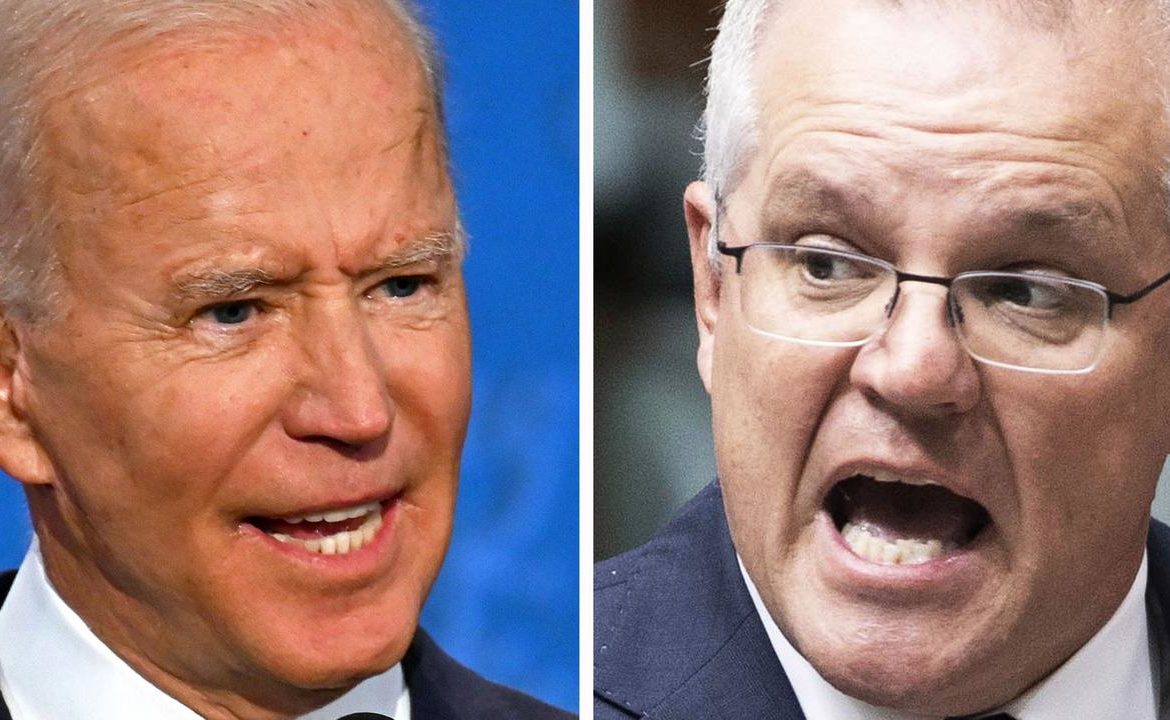This week the United States witnessed the end of the Trump era and the beginning of the new administration of President Joe Biden.
Yet despite being a half a world away, some Australians increasingly feel like they have a stake in the outcomes of US politics.
It’s perhaps not a surprise, given Australian media coverage of what goes on at the White House is at record levels and the permeation of social media with US political content.
For Australians more accustomed to the relatively pedestrian day-to-day events of our political world, the antics of Donald Trump and the running battles over more or less every major issue proved a far more exciting process to watch.
But for some it goes beyond that.
Every four years, politically inclined Aussies swap the traditional attire of red for Labor or blue for Liberal to the opposite colours of Democrat (blue, left wing) or Republican (red, right wing), as the US presidential election approaches.
RELATED: Biden rips out Trump’s red button
On the face of it, this seems relatively straightforward. Political parties throughout much of the Western world are generally relatively similar, if you take a broad enough overview of their ideological priorities and political agendas.
For example, the Canadian Liberal Party (the left wing party, confusingly) shares a great deal in common with the Australian Labor Party. As you might expect the Canadian Conservative party shares similar ideological roots to Australian Liberal-National Coalition.
RELATED: Trump in serious financial trouble
However, when you try to compare the political spectrums of the US and Australia, the similarities start to evaporate and the comparison falls apart.
Despite the appearance of a similar left/right ideological divide to Australia and much of the rest of the Western world, when you begin to inspect policy more closely, vast differences begin to emerge.
For example, the Biden administration and the Republican Party both oppose government-paid universal healthcare. Yet in Australia our mainstream political parties wouldn’t dream of advocating the removal of universal healthcare.
In Australia, Medicare (not to be confused with the US policy of the same name) is considered a foundational and almost sacred element of our society. Even though it has its issues, it generally ensures an almost universal access to government-paid medical care for all Australians.
RELATED: Biden’s huge overseas travel change in COVID fight
But in the US, many Americans are not so lucky. As of 2018, 27.5 million Americans did not have health insurance, with a further 14.6 million losing access to health insurance since the pandemic began.
Yet despite a humanitarian crisis effectively unfolding within the States, only the left wing of the Democratic Party advocate moving to a system like Australia’s where healthcare coverage is universal and provided by the government.
And the lack of ideological and policy similarities doesn’t end there.
RELATED: Ominous warning for Trump as trial set to begin
Aside from the issue of healthcare, perhaps the most striking ideological difference between Australia and the US is that of gun control.
In 1996 after the horrific Port Arthur Massacre cost the lives of 35 people, the then Howard government introduced legislation heavily restricting access to semiautomatic firearms.
Meanwhile even in some of the most left wing American states, weapons like the AR-15 rifle used by the perpetrator of the Port Arthur Massacre can be purchased from sporting goods stores.
While some senior Democrats have attempted to introduce far greater levels of gun control, the issue remains something of a political Kryptonite that is challenging to aggressively confront.
Despite Australia’s welfare safety net for the unemployed being inferior to some of its counterparts in the Western world, it represents yet another major difference when contrasted with that of the US.
Prior to the pandemic, unemployment benefits in the United States were generally paid for just 26 weeks, after which many Americans were often effectively on their own.
In Australia, as long as mutual obligation requirements continue to be met, unemployment benefits can be claimed for as long as they are required.
Despite the outward appearance of being similar to other Western nations, the reality is the US has an entirely different political spectrum.
British comedian Tom Walker once quipped that Democrat Hillary Clinton was in many ways on the ideological right of former British Prime Minister Theresa May, a Tory party conservative.
So distorted is the American political spectrum relative to much of the rest of the West, that even the lauded champion of left-wing politics is heavily to the right of a right-wing British leader on key issues that matter such as universal healthcare and social welfare.
Some Australians may have thrown their support behind Joe Biden or Donald Trump in the battle for White House, but the reality is we often don’t share the same political or ideological sensibilities as our American friends.
At a time when upheavals in the US have made almost-daily headlines, there is little doubt stories coming out of America will continue to capture the attention of many Australians.
But as a new era dawns in Washington, it’s worth taking a moment to step back and frankly assess the vast differences between what defines the political values of our respective nations. Let’s reflect on how Australia can take a different path going forward and ensure that we don’t make the same mistakes that led America to such profound divisions.
Tarric Brooker is a freelance journalist and social commentator | @AvidCommentator







